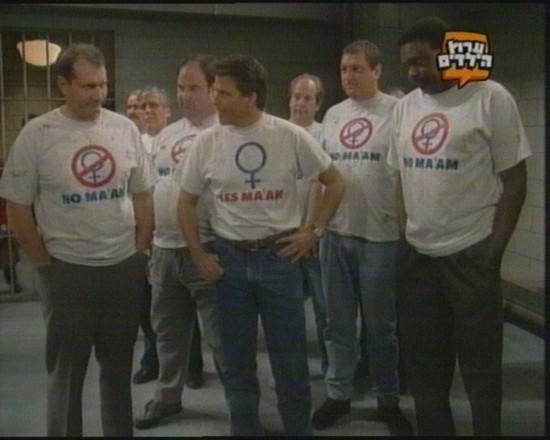
The baby boom had a long fuse. While the social mass of having such a large number of people suddenly added to a culture would naturally displace the center of social balance toward the values of younger people, the impact of the boomers was disproportionately greater than the percentage of the population they represented. The reason for this unusually large impact came from the convergence of several long-term trends and influences which converged at the time of the boomer generation to produce a sort of “Demographic Perfect Storm” which wrought fundamental changes in the culture.
When I say they were used to “demolish” it, I mean to fundamentally change the values which had defined the culture up until that time. Any culture is defined by its values, and when you change those values you change the culture into something else. Using the social mass of the boomer generation like a wrecking ball, they were slammed into a culture which was already undergoing fundamental changes in social organization and the institutions which perpetuated that organization. The large scale trends that came together as the boomers were being born and raised were:
- Demographic Displacements and Shifts
- The Rise of Mass Media
- Consumer Culture and
- Marxist Thought.
First Demographic Displacements and Shifts
World War I was fundamentally about the end of the old hereditary aristocracies in Europe, but it had a subtle and unforeseen effect on the US as well. The long term trend of movement of the population away from farms, rural settings, and agrarian lifestyles toward urban settings and industrial employment got a huge bump from the servicemen leaving the farms to go off to war and not returning to the farms when they came back. Instead they tended to stay in the cities and feed the work force for the growing industrial output of the US.
About 1920, the first of two huge demographic crossover points was passed – when the majority of the population no longer worked on and drew their livelihood from farms, but instead lived in urban areas and was employed in industrial production or commerce. During the Depression and Dust Bowl eras of the 1930s, this rural to urban movement increased as many landholders lost their land and were forced to move to the cities and find employment where they could.
World War II was a repeat of the pulling of farm boys into the armed forces and then dumping them back in the cities, with the added twist of the GI Bill which allowed many of them to attend college who otherwise would have never had the chance to do so. This sudden increase in the proportion of the population with college degrees raised income expectations and did, in fact, result in increased personal incomes for a while, which in turn drove a growing housing market and the rise of “suburbia” as new living spaces were constructed on the edges of cities already at saturation point in terms of the number of people they could hold.
With the end of the war, the US was left with massive industrial production capacity but no longer had the majority of that output being destroyed by war and thus needing constant replacements. The suburban population centers with their newfound affluence and disposable income were one obvious outlet, as was post-war Europe and Japan in rebuilding mode. But, even with all those markets the unbelievable production of the US industrial engine would have soon saturated demand. The two concepts of “Planned Obsolescence” and “Conspicuous Consumption” were wedded with the newly emerging mass media of television to produce an advertising-driven culture of perpetual consumption.
No longer were people accustomed to producing most of their own needs like food, fuel, and even furnishings. They were entirely dependent on trading the wages for their labors with other people for all the necessities and luxuries of life. This played very well into Keynesian economics, or the “velocity economy” in which the economy was measured not by total wealth, but by how many times and how often a dollar changed hands.
These were the parents of the boomers, and the environment into which the boomers were born.
Consumer Culture
About 1960, one of the most profound demographic shifts in history occurred virtually unnoticed in the US: the number of people involved in the production of anything – agricultural or manufactured goods – slipped into the minority and there became more people involved in selling, distributing, or managing those goods than were involved in producing them. In other words, the US shifted from being a nation of producers to a nation of handlers. This laid the groundwork for being able to use such phrases as “service economy” or “information economy”, which would play a very significant role in how the expectations of affluence created by the circumstances of the boomers’ upbringing would be met as they moved into and through adulthood.
The boomers were raised on a steady diet of television, parental competition to “keep up with the Joneses”, and the repeated refrain from their depression-era parents that “we don’t want our kids to have it as hard as we had it.” They were also indoctrinated virtually from birth that they would carry on the tradition of being college educated which may have only started with their parents, but which was definitely seen as the key to “a better life” – which at that time generally meant “having more stuff.”
The Rise of Mass Media
After WW I, two new mass communication technologies really began to take off and spread – film (movies) and radio. These two technologies covered two very important aspects of culture – information dissemination and entertainment. Radio had the advantage over print media like newspapers in being immediate and timely, as well as being one step closer to direct human experience – hearing is a direct sensory experience, while reading requires intellectual processing and literacy in addition to sight. Literacy was far from universal at that time, so people could be reached by radio that could not be reached by newspapers, books, or magazines.
Film put the experience of “theatre” within the reach of the common people. While everyone might not be able to afford tickets to a Broadway play, almost everyone could scrape together the 5 cents for which they could purchase an hour or two of complete escapism. This escapism gained even wider appeal during the Great Depression when a great many people had really difficult lives from which they loved having the ability to purchase an hour or two of complete escape.
The film industry spawned an interesting side effect based on the social tendencies of people – the phenomenon of celebrity. Stage actors and other entertainers had always had a degree of fame and celebrity, but the mass market venue of film provided a much broader potential audience and a whole host of new niches for celebrities to fit into and exploit. It was possible to have only so many great Shakespearean actors or operatic divas, but movies provided the opportunity for many different types – from the buffoons of the 3 Stooges to the cowboy actor – to gain a following.
Radio and film merged their potentials in television. Sight, sound, and immediacy were a very potent combination. The propaganda potential of radio was well recognized and exploited in the years leading up to WW II and during the war, and the advent of television on a mass scale made it a propaganda device on steroids. In addition, it also made a very nice consumer good to occupy those factories, as well as being a self-perpetuating outlet for consumption because it created demand through advertising.
Radio also spawned a related industry which would eventually come to figure very heavily in the “information economy” to come – recorded music. While it was a product with some continuing market from its introduction up through the war years, it really started to become a force in its own right when presented with a market comprised of suburban teenagers with lots of time on their hands due to lack of involvement in any economic activity but still with disposable income.
So, all the fragments were arranged – massive production, massive consumption, high degree of wealth relative to what had gone before, mass media with both propaganda potential and the ability to create demand for consumer goods by emotional manipulation, and a number of products with no direct need or worth as necessities of life which were easy to produce and easy to distribute – when the baby bomb was detonated and sent those fragments tearing through the foundations of cultural values.
Marxist Thought
Now the plot thickens.
All of the above is merely descriptive – laying out the conditions that existed when this huge mass of new future citizens was dumped onto the scene.
Marxist thought goes back, of course, to Karl Marx and Friedrich Engels in the mid-19th century. However, the portion I’m going to highlight starts in 1917 with the Bolshevik revolution in Russia. Rob has covered this extensively, so this is going to be an extremely brief synopsis. For a far more complete picture, go to http://menforjustice.net/library or http://no-maam.blogspot.com.
The Russian revolution failed to spark the world-wide uprising of the proletariat to kill the capitalists which the Marxists had expected. In analyzing the reasons why it didn’t, Marxist theorists saw the cultural institutions of religion and religious values, family, patriotism/nationalism, and education as being too strong in maintaining and transmitting cultural values for such a major shift to take place. In order for the Communist revolution to come about, those institutions would have to be weakened and undermined and the cultural values they transmitted be destroyed.
One of the best ways to go about this was to deal with people’s baser appetites and motivations and weaken their intellectual and moral control of their behavior. A perfect model of how this might be accomplished was provided by Freudian psychoanalytic theory with his “id, ego, and superego” – the id being the reptilian brain and the animal appetites and emotions, the superego being social and moral consciousness, and the ego mediating the conflicts between the two. Appealing to the id, and weakening the superego, puts the ego in service of the id.
The Frankfurt School was a center of Marxist thought established in Germany in the early-mid 1920s. Their goal was to meld psychoanalytic thought with political action as a way of weakening cultural institutions supporting restraint, by endorsing hedonism and short-term gratification. The prime strategist was a man named Antonio Gramsci, who laid out a plan for a “Long March Through The Culture” which would leave every cultural institution which had defeated the Bolshevik revolution in a pile of rubble in its wake.
So, now the stage is set.
Fearing the rise of National Socialism, the Frankfurt School relocated to New York in the mid 1930s. Most of the members were Jewish, so they had real reasons to fear the anti-Semitic sentiment which was rising in Germany, and they were able to come into the US without attracting much attention because of the large influx of other Jewish intellectuals and professionals fleeing Germany for the same reason. Once here, they set out to infiltrate and become strong influences in the media, education, and psychotherapeutic communities. There was an easy symbiosis between these, particularly due to the chic and trendy nature of psychoanalysis in the post WW II US.
Despite the way that McCarthy has been ridiculed and demonized, there really were communists active in the entertainment industry during the post-war years. They didn’t concentrate as much on strictly Marxist themes as they did on indirectly attacking cultural values. Instead of a direct attack on religion, for example, a competing idea of nihilism was introduced and promoted – e.g. “Rebel Without A Cause.”
The boomers were sitting ducks for all this because they were children in the stage of life when the purpose and goal is to learn and internalize cultural values. Instead of the parents, churches, and communities which provided most of the input for previous generations, the boomers were raised by television, radio, and film. The monumental sexual drives of adolescence, which every culture has to find a way to grapple with and restrain, coincided with a generalized loosening of sexual mores and restraints. More and more sexual imagery started appearing, and the Pill conveniently arrived – separating sex from reproduction and making “recreational sex” a real possibility – just as the first boomers hit puberty.
During the “turbulent 1960s”, there were two major cultural phenomena which strained generational relationships even more than the classic and inevitable tensions between the old and the young – the civil rights movement, and the Vietnam War. The high level of distrust engendered among young people for the older generations, the “establishment”, was captured in Abbie Hoffman’s famous dictum “Never trust anyone over 30.” ”Traditional” values were seen as corrupt, exploitive, capricious, and often dishonest. A major youth movement/trend developed whose participants were called “Hippies” with values directly opposed to and reacting against the values of their parents and older generations. It was actually termed the “counter-culture”, which was an very accurately descriptive term because the values which defined it ran directly counter to prevailing cultural values of the time. ”Sex, drugs, and Rock’n'Roll” was the mantra, “Make Love, Not War” was the passion, and “Free Love” was the ideal goal. Hedonism became the highest good, and even members of their parents’ generation wanted to join the party and have some fun. The developmental period of adolescence got greatly extended, with many parents sitting down to smoke dope with their own kids, if not being the ones to introduce their own children to the drug subculture.
The expectations of affluence, plus the expectations of their parents, plus the Vietnam War sent the boomers to college in unprecedented numbers. Here is where the Frankfurt school had really been busy. A huge number of their members had achieved professorships in prestigious institutions, and by the late 1960s they owned the academy. Hardly any discipline outside the hard sciences was untouched. Their thinking pervaded the social sciences, the arts, philosophy, and even theology. The boomers were at college to LEARN, so that is what they did. Few had the critical facilities to question and analyze what they were being taught. Some of us renegades who did question saw the early beginnings of Political Correctness taking shape as refusing to conform to the ideological indoctrination would be severely punished. If you wanted good grades, and that meant the carrot of a “good job” that they dangled in your face, you toed the party line.
And, into this volatile mess, they injected feminism.
The family, paradoxically, was at the same time both the strongest cultural institution and one of the easiest to attack. The age old tensions between men and women, dubbed “the battle of the sexes” were easily exploited to get women to see themselves as an “oppressed” class. The sexual revolution was in the news, but not in everyone’s minds yet. The boomers were raised mostly under the old cultural mores and values regarding sex, and then suddenly turned loose with a new toy they weren’t quite sure how to play with. Mis-cues and misunderstandings between the sexes on what sexual “liberation” actually looked like were easy fodder for exploitation in the next phase of the gender war – the escalating issue of “rape.”
The establishment of “Women’s Studies” departments in the academy metastized the cancer, and gave the hard core haters an entrenched “bully pulpit” from which to spread their Marxist theory and hatred against the “class” of men.
Boomer men were on the horns of two-pronged dilemma They were at the stage of their lives when their primary goal and task was to find a mate and form a family, yet their pool of potential mates was developing values which were fundamentally different than the values that men had been led to expect to find in the women they would choose as wives. Trained in one set of skills and attitudes that had been attractive to women in the past, men were now finding women who were not attracted by those characteristics and were demanding something different. However, the specifics of what was demanded no longer followed any sort of cultural pattern but were mostly based on the preferences of individual women – their much vaunted “choices.”
No-fault divorce and the rise of “rape consciousness” fundamentally changed the relationship dynamic within marriage. The idea that a man could be convicted of “raping” his wife totally erased the long held tradition of “marital duties” and turned sex from being part of the foundation of the relationship between man and wife into an instance-by-instance exercise in the gratification of personal whims.
The Marxist concept of “class oppression” combined with the sex-fearing dysfunction of women like Susan Brownmiller severed the most basic marital bond in one blow.
This class warfare was extended by placing all sexual activity on a “continuum of oppression” and set up a situation and consciousness that men could not possibly do anything but lose – the fundamental attraction between the sexes which is essential for the continuation of the human race became proof of “oppression” and a constant and perpetual source of justification for claims of female victimhood. The class consciousness of the “sisterhood” hoodwinked women into believing that they had more in common with women living on the other side of the world, or with women who had lived and died years before they were born, than with the man with whom their shared their bed, their children, and their lives.
This “unity based on type” was exactly what the socialist and union organizer Eugene Debs was saying when he said -
"while there is a lower class, I am in it, and while there is a criminal element I am of it, and while there is a sooul in prison, I am not free."
“Brotherhood” and “sisterhood” are the same basic concept, and are illustrations of the same type of “ideology over everything else” that sometimes found members of the same families, sometimes even biological brothers, on opposite sides in the US war between the states, or civil war. A woman might have a splendid life – a comfortable home, a loving husband, decent kids – but as long as there was one woman anywhere who was “oppressed”, then so was she. ”
“The personal is political and the political is personal” destroyed people’s ability to have personal relationships and turned all relationships into political relationships. A man and a wife might be having a typical couples argument, and suddenly the man became responsible for the mistreatment of women in the Middle East, the binding of Chinese women’s feet, and the lack of women’s suffrage a century ago.
In the face of this onslaught, most men felt an unbelievable sense of betrayal, but they were stuck in marriages to these women and their only choices were a lifetime of conflict or to just surrender and give in. Most men chose keeping their family together over falling on their swords of principle, and just caved in. Some even went so far as to exhibit a form of Stockholm Syndrome and became dedicated feminists, denouncing themselves in weird displays of schizophrenia and self-abdication.
Those that didn’t soon faced the Soviet-style “re-education camps” created by the DV industry which was based on the Marxist idea that all Domestic Violence was a conspiracy by men to perpetuate their “oppression” of women. There is no more purely Marxist bit of thinking at work in feminist countries today than the Duluth Model of domestic violence.
Demographic and economic shifts, and growth of mass media and consumer culture continue
This gradual infiltration of Marxist thought occurred against the backdrop of continuation of the social, economic, and cultural trends which took off a half century before. During the 1960s mass media exploded. For many years there had been only 3 TV broadcast networks and only people living in or near major cities had access to all three. As the distance increased, reception decreased and people living 60 or more miles from an urban center often could only get all 3 stations reliably if the weather was clear. Throw in a bit of rain or fog and most people got vague ghosts on the TV and slightly warmed rain or fog between them and the broadcast tower.
These remote communities soon saw a business opportunity open up in the form of Community Antennas, or Cable TV. Entrepreneurs built huge towers and installed signal boosters, filters, and amplifiers and delivered the signal to homes via coaxial cable. The low cost of this kind of distribution system led quickly to the development of original content specifically for cable, which eventually became cable networks like HBO, Cinemax, and MTV. The expansion of content drove up demand, and demand drove the expansion of content. An entire new “industry” was born which in turn spawned many new jobs.
The transition from a nation of producers to a nation of handlers in 1960 was the key to an economy which would have to absorb more new workers than ever before in history. A purely production-based economy could not have done so because there were not enough markets to absorb greatly increased output. At the end of the decade of the 1950s, the US, with 2% of the world’s population, was absorbing over 50% of the world’s industrial output. The rebuilding of Europe and Japan were essentially complete, so any increase in production would require opening new markets. But, opening new overseas markets would require spurring development in those areas so that those countries would have something of economic value to exchange with the US. Only a strategy of globalization provided enough potential for perpetually expanding markets, and one of the first functions to be “outsourced” to other countries was industrial production.
This fit perfectly with the white-collar expectations of the new generation who never once considered following in their fathers’ footsteps and becoming blue collar workers.
The boomers were a double-whammy to the labor market because not only was a larger number of men than ever before looking for places in it, but also a large number of women were following the feminist script to compete with men economically and for the available jobs. The “service economy”, and “information economy” ideas led to the rapid development of a generalized “managerial” class, which required skills which transferred seamlessly into a rapidly growing government bureaucracy.
As the boomers seeped into the workforce between 1964 and about 1986, the economy slid into the doldrums. The petroleum crisis in the mid 1970s ended cheap gasoline, dealt a crippling blow to the US auto industry because they were too slow to respond to trends and downsize their offerings, and opened the US market to Japanese autos of much higher quality than the US produced models. Globalization had begun in earnest.
Interest rates spiraled out of control in the early 80s, going over 20%, which depressed the housing market and sent ripples through the rest of the economy. The displacement of farm families of the 1930s was repeated as rising fuel costs and a weak economy forced a large percentage of the remaining family farms out of business.
Through all this, men and women had been stroking away, coping as best they could, trying to work out some sort of new balance and mixture of gender roles, and managing to get along.
And then the feminists unveiled the nuclear device of the gender war – the redefinition of normal sexual relations between men and women as “rayyyype!”
The notion of women as an “oppressed class” had simply failed to gain the traction it had needed to completely split the normal attraction between the sexes, so the obvious strategy was to attack that attraction itself. Susan Brownmiller had laid the conceptual foundations in the mid 1970s with “Against Our Wills”, and Catherine MacKinnon and Andrea Dworkin had carried the water of the concept forward with sexual harassment law and Dowkin’s sex-hating, man-hating, prose. All it took was for Mary Koss to fabricate her bogus bit of research in which she mysteriously “found” that “1 in 4″ women were being “rayyyyped” and the wedge to sever the trust and attraction between the sexes was set.
The feminist movement had pretty much stalled because most women still didn’t see their husbands, brothers, fathers, and male friends as the enemy. People were slowly working out new roles and people were adjusting to dual income families. The Equal Rights Amendment had failed back in the 1970s, but the real barriers to the kind of equality it envisioned were more in the slowly changing social attitudes. Things had changed blindingly fast as social change normally goes, but still not fast enough for the feminists.
And then, along came Susan Faludi, with her Backlash: The Undeclared War Against American Women. If there ever is a trial for war crimes of the gender war, I hope Faludi hangs. Despite what were actually huge strides toward a new more equal social system, including the fact that women had been getting the majority of college degrees for a full decade, she dismissed all that and re-kindled the sense of victimhood among women of a certain age group. There wasn’t a war before her book, but things certainly became one as a result of it.
In the brief cultural span of less than 50 years, every social value which was in place half a century ago has been swept aside. The idealistic boomers, fresh out of college with their Marxist ideas went into every aspect of government, and rode Lyndon Johnson’s “Great Society” into a welfare-therapeutic state where they controlled education, social services, and most branches of government as a result of having become entrenched in the multitude of bureaucracies spawned by the notion that every human problem could be solved if you just threw enough money at it.
The right to kill one’s own children and call them “choices” was enough of a blow to the culture, but when people started seriously using “same sex” and “marriage” together, the Long March Through the Culture was complete – absolutely nothing meant the same thing it had 50 years before.
Previous Zenpriest Index Next


















































